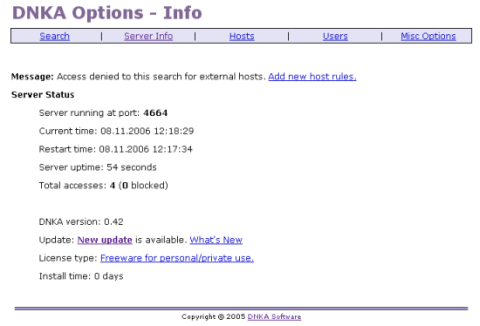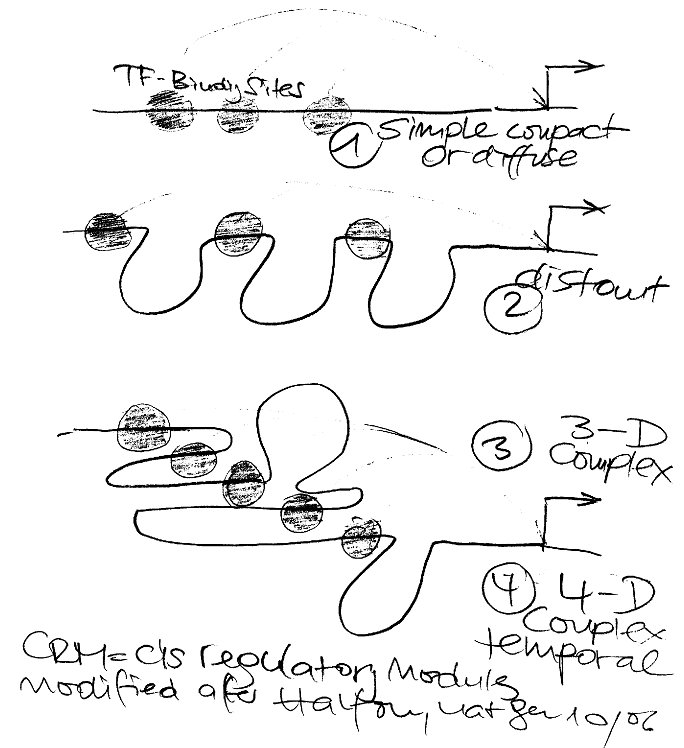I do not want to discuss the rather polemic view of Daniel Dennetts “Breaking the spell” or promote other books of the new secularism. The Guardian digital edition writes on 29th Oct 2006
Secularism is suddenly hip, at least in the publishing world. A glut of popular science books making a trenchant case against religion have soared up the bestseller lists both here and in America. The phenomenon represents a backlash against a perceived rise in religious fundamentalism and recent crazes for ‘spirituality’ by way of books such as The Da Vinci Code. Secularists are now eager to show that the empiricism of science can debunk the claims of believers.
More interesting is the question if human morality is an inborn trait or not. Nicholas Wade has a nice essay in the NYT:
Marc D. Hauser, a Harvard biologist, has built on this idea to propose that people are born with a moral grammar wired into their neural circuits by evolution. In a new book, “Moral Minds†(HarperCollins 2006), he argues that the grammar generates instant moral judgments which, in part because of the quick decisions that must be made in life-or-death situations, are inaccessible to the conscious mind. People are generally unaware of this process because the mind is adept at coming up with plausible rationalizations for why it arrived at a decision generated subconsciously. Dr. Hauser presents his argument as a hypothesis to be proved, not as an established fact. But it is an idea that he roots in solid ground, including his own and others’ work with primates and in empirical results derived by moral philosophers.
I renember also an article by Roger Higfield in the Washington Times (24th March 2003) than unfortunately vanished from the internet:
Scientists are hunting for a “God gene” that underpins our ability to believe. The idea of genes linked with beliefs does not look far-fetched, given the influence of genetics on the developeing brain.
Higfield is refering to an empirical twin study:
To investigate the heritability of religiousness and possible age changes in this estimate, both current and retrospective religiousness were assessed by self-report in a sample of adult male twins (169 MZ pairs and 104 DZ pairs, mean age of 33 years). Retrospective reports of religiousness showed little correlation difference between MZ (r=.69) and DZ (r=.59) twins. Reports of current religiousness, however, did show larger MZ (r=.62) than DZ (r=.42) similarity. Biometric analysis of the two religiousness ratings revealed that genetic factors were significantly weaker (12% vs. 44%) and shared environmental factors were significantly stronger (56% vs. 18%) in adolescence compared to adulthood. Analysis of internal and external religiousness subscales of the total score revealed similar results. These findings support the hypothesis that the heritability of religiousness increases from adolescence to adulthood.
Time on Oct 17, 2004 referred to a book of Dean Hamer “The God Gene”
Chief of gene structure at the National Cancer Institute, Hamer not only claims that human spirituality is an adaptive trait, but he also says he has located one of the genes responsible, a gene that just happens to also code for production of the neurotransmitters that regulate our moods. Our most profound feelings of spirituality, according to a literal reading of Hamer’s work, may be due to little more than an occasional shot of intoxicating brain chemicals governed by our DNA. “I’m a believer that every thought we think and every feeling we feel is the result of activity in the brain,” Hamer says.
This looks very much like a completely physical view of spiritual affairs (Hamer became famous for his failure of the “gay gene” before abandoning science).
So we may better turn to the question if there is any theological background? I renember a famous guest lecture in Marburg 1980 about the Epistle to the Romans by Herbert Braun (Braun is a Bultmann scholar. Ernst Fuchs was in Marburg too; together with Ernst Käsemann and Günther Bornkamm they are all famous scholars of Rudolf Bultmann. Käsemann and Fuchs both wrote a “Commentary on Romans”).
Fuchs highlighted Rom 2:14 in King James translation saying:
13 For not the hearers of the law are just before God, but the doers of the law shall be justified.
14 For when the Gentiles, which have not the law, do by nature the things contained in the law, these, having not the law, are a law unto themselves:
15 Which shew the work of the law written in their hearts, their conscience also bearing witness, and their thoughts the mean while accusing or else excusing one another;
Science and theology are not far away here. Maybe it is even common sense that most humans have an inherited deep feeling of religiousness.
CC-BY-NC Science Surf
accessed 20.12.2025


